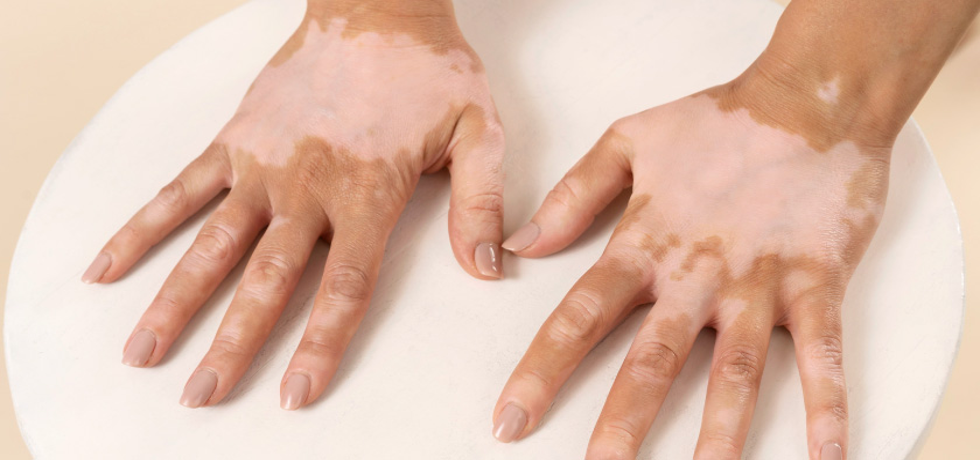
Cracking the Code of Vitiligo: Symptoms, Treatments, and Hope
Introduction
Vitiligo is a skin condition that affects a significant portion of the global population, causing white patches to develop on the skin due to a loss of pigment. Understanding vitiligo is essential for its management and for helping those diagnosed to navigate their journey confidently. In this blog, we will dive into the symptoms, treatments, and the hope for a brighter future for individuals living with vitiligo in India.
Recognizing the Symptoms of Vitiligo
The most notable symptom of vitiligo is the appearance of depigmented patches that can appear anywhere on the body. These patches often start small and may gradually expand in size. In some cases, individuals may also notice premature greying of hair, known as leucotrichia. Awareness of these symptoms can lead to early diagnosis, making it crucial for anyone with a family history or risk factors to monitor their skin closely.
Understanding the Causes Behind Vitiligo
While the exact causes of vitiligo are not fully understood, autoimmune dysfunction is believed to play a significant role. Genetic predispositions, environmental triggers, and oxidative stress may also contribute to the condition’s onset. Research indicates that the immune system mistakenly attacks melanocytes, the cells responsible for skin pigmentation, leading to the characteristic white patches. Understanding these causes can help in managing and addressing the psychological impact of vitiligo, fostering a sense of hope among those affected.
Treatment Options Available for Vitiligo
Managing vitiligo effectively often requires a personalized approach. While there is currently no definitive cure, various treatments can help manage symptoms and restore some pigmentation. Topical treatments, including corticosteroids and vitamin D analogues, are commonly prescribed to reduce immune activity and promote melanocyte function. Phototherapy, specifically narrowband UVB therapy, has also been shown to be beneficial for many individuals. For extensive or obstinate cases, surgical options such as melanocyte transplantation may provide positive outcomes. Consulting with a qualified dermatologist can help identify the most suitable treatment plan for each patient.
Living with Vitiligo: Coping and Acceptance
Living with vitiligo goes beyond medical treatments. Emotional and psychological support plays a vital role in coping with the challenges associated with this condition. People with vitiligo can benefit from support groups, cognitive behavioural therapy, or counseling to address feelings of anxiety, low self-esteem, and body image issues. Embracing ones skin and seeking acceptance can pave the way for empowerment and self-confidence.
Supporting One Another: Community and Resources
For individuals navigating life with vitiligo, community support and resources can be invaluable. Numerous online forums and social media groups connect those affected by vitiligo, providing a platform to share experiences and strategies for coping. Engaging with these communities can not only foster a sense of belonging but also assist in information exchange, advocating for better healthcare access and awareness within society.
Conclusion: A Bright Future Ahead
While the road to managing vitiligo may present challenges, advancements in research and treatment options continue to evolve. Fostering a culture of support, education, and awareness will encourage individuals living with this skin condition to thrive. By understanding the symptoms and pursuing appropriate treatments, individuals can take proactive steps toward a hopeful future.
Frequently Asked Questions (FAQs)
1. Is vitiligo contagious?
No, vitiligo is not contagious and cannot spread through physical contact.
No, vitiligo is not contagious and cannot spread through physical contact.
2. Can vitiligo occur at any age?
Yes, vitiligo can develop at any age, although it often appears before the age of 30.
3. What is the best treatment for vitiligo?
The best treatment varies for each individual; consulting a dermatologist is essential for a tailored approach.
4. Are there support resources available for vitiligo patients?
Yes, many support groups and online communities can provide encouragement and share experiences.
For professional assistance and expert advice from leading dermatologists like Dr. Hital Patel, experience the benefits of Cracking the Code of Vitiligo: Symptoms, Treatments, and Hope with Hair & Skin Specialist Dr. Hital Patel at The Skin Artistry. Our clinics in PDPU Gandhinagar, Vastrapur Ahmedabad, and Hyderabad (Visiting Consultant) offer top-quality care and personalized treatments. Visit us today to learn more about our services and take advantage of our special offers! For more insights, updates, or to collaborate, stay connected with The Skin Artistry.

